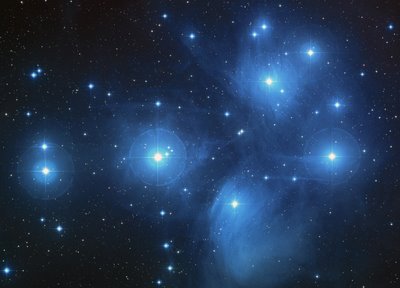Number of Energy Levels: 2
First Energy Level: 2
Second Energy Level: 1
Li Lithium
Atomic Number: 3
Atomic Mass: 6.941 amu
Melting Point: 180.54 °C (453.69 K, 356.972 °F)
Boiling Point: 1347.0 °C (1620.15 K, 2456.6 °F)
Number of Protons/Electrons: 3
Number of Neutrons: 4
Classification: Alkali Metal
Crystal Structure: Cubic
Density @ 293 K: 0.53 g/cm3
Color: silvery
Date of Discovery: 1817
Discoverer: Johann Arfvedson
Name Origin: From the Greek word lithos (stone)
Uses: batteries, ceramics, lubricants
Obtained From: passing electric charge through melted lithium chloride, spodumene
Monday, October 23, 2006
Sunday, October 22, 2006
Helium
Number of Energy Levels: 1
First Energy Level: 2
He Helium
Atomic Number: 2
Atomic Mass: 4.002602 amu
Melting Point: -272.0 °C (1.15 K, -457.6 °F)
Boiling Point: -268.6 °C (4.549994 K, -451.48 °F)
Number of Protons/Electrons: 2
Number of Neutrons: 2
Classification: Noble Gas
Crystal Structure: Hexagonal
Density @ 293 K: 0.1785 g/cm3
Color: colorless
Date of Discovery: 1895
Discoverer: Sir William Ramsey
Name Origin: From the Greek word hêlios (sun)
Uses: balloons, deep sea diving
Obtained From: natural gas deposit, air
First Energy Level: 2
He Helium
Atomic Number: 2
Atomic Mass: 4.002602 amu
Melting Point: -272.0 °C (1.15 K, -457.6 °F)
Boiling Point: -268.6 °C (4.549994 K, -451.48 °F)
Number of Protons/Electrons: 2
Number of Neutrons: 2
Classification: Noble Gas
Crystal Structure: Hexagonal
Density @ 293 K: 0.1785 g/cm3
Color: colorless
Date of Discovery: 1895
Discoverer: Sir William Ramsey
Name Origin: From the Greek word hêlios (sun)
Uses: balloons, deep sea diving
Obtained From: natural gas deposit, air
Hydrogen
Number of Energy Levels: 1
First Energy Level: 1
H Hydrogen
Atomic Number: 1
Atomic Mass: 1.00794 amu
Melting Point: -259.14 °C (14.009985 K, -434.45203 °F)
Boiling Point: -252.87 °C (20.280005 K, -423.166 °F)
Number of Protons/Electrons: 1
Number of Neutrons: 0
Classification: Non-metal
Crystal Structure: Hexagonal
Density @ 293 K: 0.08988 g/cm3
Color: colorless
Date of Discovery: 1766
Discoverer: Henry Cavendish
Name Origin: From the Greek words hudôr (water) and gennan (generate)
Uses: Balloons, metal refining
Obtained From: mines, oil, gas wells
First Energy Level: 1
H Hydrogen
Atomic Number: 1
Atomic Mass: 1.00794 amu
Melting Point: -259.14 °C (14.009985 K, -434.45203 °F)
Boiling Point: -252.87 °C (20.280005 K, -423.166 °F)
Number of Protons/Electrons: 1
Number of Neutrons: 0
Classification: Non-metal
Crystal Structure: Hexagonal
Density @ 293 K: 0.08988 g/cm3
Color: colorless
Date of Discovery: 1766
Discoverer: Henry Cavendish
Name Origin: From the Greek words hudôr (water) and gennan (generate)
Uses: Balloons, metal refining
Obtained From: mines, oil, gas wells
Tuesday, July 04, 2006
Monday, July 03, 2006
Subscribe to:
Comments (Atom)

